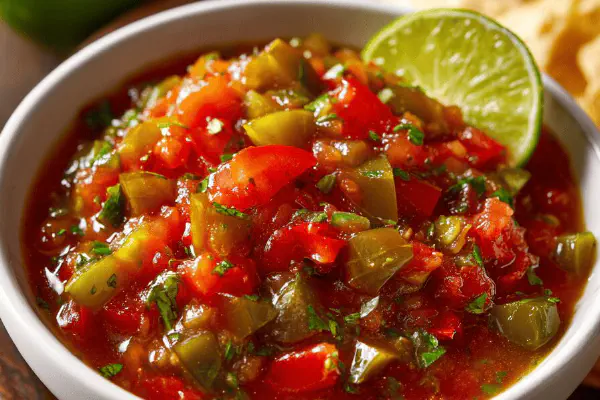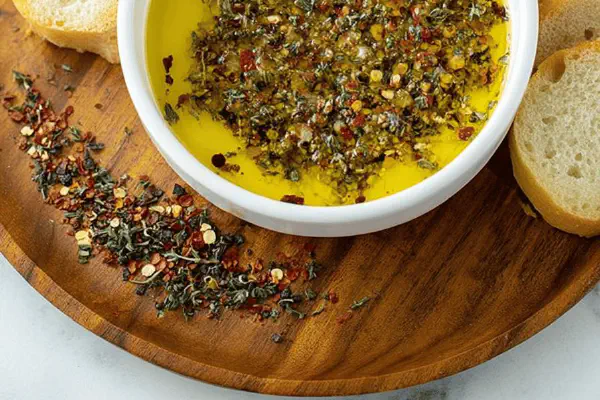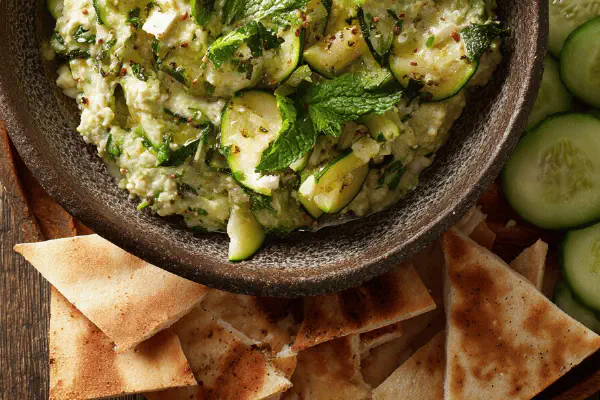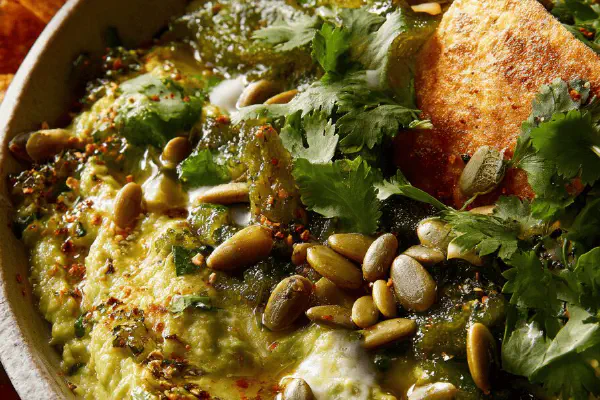Jalapeno Pineapple Salsa
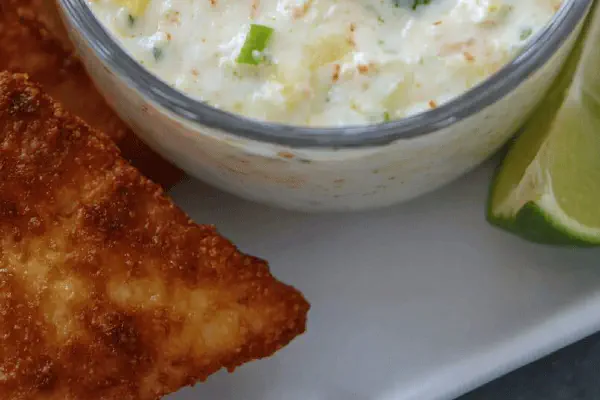
By Emma
Certified Culinary Professional
Ingredients
- 1 cup fresh pineapple chunks, with juice
- 1 medium jalapeno pepper, deseeded for less heat or left whole
- 2 teaspoons fresh lime juice
- 1 teaspoon lime zest
- 1/2 cup cream cheese, softened (substitute for yogurt)
- 1 tablespoon granulated sugar
- 1/4 teaspoon crushed red pepper flakes
- 1/2 teaspoon kosher salt
About the ingredients
Method
- Throw pineapple chunks, including juice, into food processor.
- Add jalapeno—start with half if unsure about heat; deseed if you want it milder.
- Add lime juice and zest. Zest adds sharp brightness; don’t skip.
- Drop in cream cheese instead of yogurt. Gives thicker, richer mouthfeel, less tangy edge.
- Sprinkle sugar over ingredients; balances pineapple’s tartness and jalapeno’s heat.
- Season with salt and crushed red pepper flakes for gentle heat layering.
- Pulse about 15 quick taps—don’t overblend. You want small chunks, texture visible.
- Scrape sides, pulse a few more times if chunks need breaking up but watch that you don’t liquefy.
- Transfer salsa to bowl; cover and chill minimum 25 minutes to let flavors marry.
- Stir well before serving; should feel creamy with fruity pockets and warm tingle.
- If too thick, loosen with splash of cold water or extra lime juice.
- Keep refrigerated and consume within 3 days; pineapple enzymes break down texture after too long.
Cooking tips
Chef's notes
- 💡 Pulse food processor carefully—fast bursts only. Watch texture closely. You want chunks, not puree. Too many pulses make syrup. Stop to scrape, get all edges. Texture in salsa isn’t smooth sauce; it’s bite and contrast. Chunkiness holds cooling cream cheese and pineapple juice without turning watery.
- 💡 Jalapenos vary wild in heat; start small then test. Deseed to cut bite if needed but keep some seeds for smoky heat. Add whole pepper if sure. Red pepper flakes add mild background fire, not upfront burn. Layering like this keeps salsa complex. Cream cheese tames sharpness, balances heat with fatty softness.
- 💡 Fresh pineapple chunks are key—retaining juice fattens flavor, but canned means drain thoroughly and reduce lime juice so no runny mess. Lime zest is non-negotiable. It wakes everything up sharply, bright citrus punch that juice alone can’t. Skip zest and salsa tastes flat, missing in depth.
- 💡 Chill minimum 25 minutes; longer up to 1 hour better. Flavors marry, soften jalapeno edge, and sugar balances acidity over time. Cream cheese firms up chilly texture, making dip cling well. If too thick after chilling, loosen with tiny splash cold water or extra lime juice, careful not to dilute taste or texture.
- 💡 Salt matters—kosher salt preferred for dissolving evenly without harshness. Sugar offsets acidity and spicy heat but adjust based on pineapple ripeness; very sweet pineapple might mean skip sugar. Smoked paprika optional for subtle smoke layer; adds complexity without shouting spice. Keep simple if unfamiliar.
Common questions
How to reduce jalapeno heat?
Deseed pepper or start with half, add more later. Use milder peppers if needed. Red pepper flakes add gentle heat layer. Cream cheese cools burn but won’t remove all heat. Taste as you go.
Can I use canned pineapple?
Yes but drain well, remove excess liquid or salsa gets watery. Reduce lime juice slightly to avoid thinning. Fresh pineapple preferred for brightness. Texture changes if too soft or syrupy canned.
Why does salsa get watery after chilling?
Pineapple enzymes break down cream cheese and release juice. Overprocessing also causes liquid. Pulse just enough to break chunks but keep texture. Chill less or serve soon for better consistency.
How to store leftovers?
Keep refrigerated in airtight container. Use within three days to avoid texture breakdown. Stir before serving to redistribute juices and creaminess. Don’t freeze; texture and flavors degrade badly.
